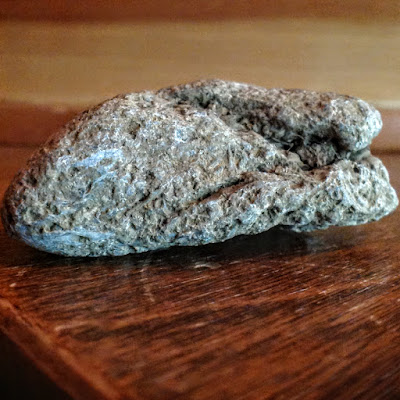The faces and images in this fourth set of photos are fairly obvious, but I would like to comment on the following:
Photos 22-24--I think these images of a snake's head are just fantastic. How can anyone doubt that this was made by a human hand?
Photos 26-28--I see the head of an elephant with its trunk so I'm assuming this might be another mammoth or mastodon. Both had trunks. I think mastodons were more common in our area. My question is how did these early artists know what they looked like? It's not like they could Google their image. This suggests that the work was created prior to these animals going extinct.
Photos 35-38--These last photos feature what looks like a lizard like creature crawling on a rock. I have seen a similar idea in stones such as Beaver On A Rock and An Interesting Fossil: Part Two . (See: the last images.) You will note that the photos featured in the early postings aren't as clear as they were taken prior to my purchasing a proper lens.
At this point, I'm featuring something like 240 images per stone over five or six postings. This might seem excessive, but I feel it is necessary in order to demonstrate how many different images are appearing in one stone. The majority of the stones that I've found have multiple images; images within images; and scenes within images. The level of artistic sophistication is mind-boggling. There is absolutely no way that nature could create this in one stone let alone many. And as for that snake's head, it's brilliant!






































No comments:
Post a Comment